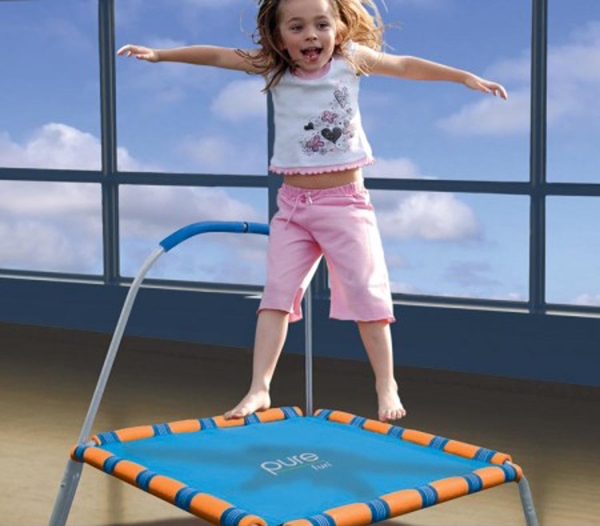Trampolining is a dangerous activity for kids and should not be done at home, the American Academy of Pediatrics (AAP) says. Studies on the efficacy of trampoline safety measures are reviewed, and although there is a paucity of data, current implementation of safety measures have not appeared to mitigate risk substantially. The potential for severe injury is still relatively high. Therefore, the home use of trampolines is strongly discouraged.
The most common types of injuries — up to 50 percent — are to the lower extremities, including ankle sprains. Injuries to the head and neck are less common, accounting for about 10 to 17 percent of injuries, but can cause permanent neurological damage.
Parents who decide to have a trampoline in their home despite recommendations are advised to follow these basic safety tips:
- Read safety instructions in the trampoline and safety net owner’s manual.
- Always use a quality safety enclosure.
- Make sure there is only ONE jumper at a time. Multiple people jumping on the trampoline at once increase the risk for injury, and smaller jumpers are 14 times more likely to be injured than heavier ones, the AAP says.
- Children should be supervised at all times while jumping.
- Somersaults and flips put children at increased risk for injuries of the head and spine; therefore they should only be performed by expert jumpers to avoid neck injury.
- Make sure any bars or springs are sufficiently padded. Buy high quality trampolines that address this issue or invest in higher quality pads at the very least.
- Make sure the safety net enclosure door is shut or purchase an overlapping entry net.
- Do not use a ladder if you have younger children who should not be jumping on the trampoline.

Your Baby checkup
what are the vaccinations that he should have taken until now?
Generate a report for my baby.
Track Your Baby Vaccinations
Find Your Baby name
Mohandessin
01002195777
01000012400
0233048350
Beverly Hills
01000012900
0238576831
El Tagamo3
Al Sheikh Zayed
02- 38514031
01000608597


